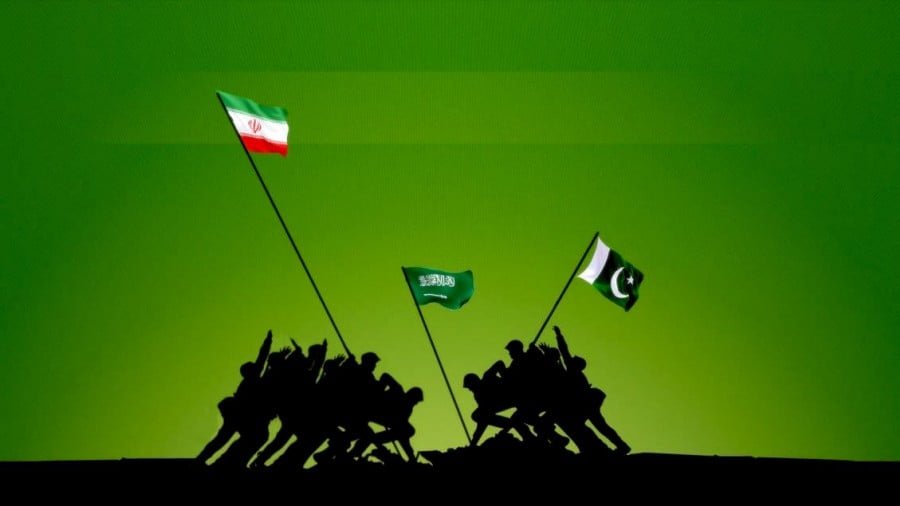Mackindergarten Lesson
The Heartland plus population plus production plus sea power: that’s the end of the “Columbian Age”.
In 1904, the British geographer, Halford Mackinder, read a paper named “The Geographical Pivot of History” at the Royal Geographical Society. In the paper he advanced a hypothesis on the influence of geographic reality on world power relationships. This is sometimes regarded as the founding moment of the study of geopolitics. Looking at the whole planet, he spoke of the “heartland” – the great landmass of Eurasia – and the Islands – the large islands of the Americas and Australia and the small islands of the United Kingdom and Japan. (Parenthetically, he does not seem to have much concerned himself with Africa or South America.) For most of history, Europe was an isolated and not very important appendage of this great world mass, subject to continual raids from the nomads of the Heartland, and the outer islands played no part in world events.
All this changed about five centuries ago when what he called the “Columbian Age” began. That is to say, the time when Europe discovered sea power. This gave the Islands a great dominance over the Heartland. In 1905, however, he saw the situation changing with the construction of railways which could connect the Heartland. In 1919 he produced his famous “triad”:
<<Who rules East Europe commands the Heartland.
Who rules the Heartland commands the World Island.
Who rules the World Island commands the world.>>
His fear then was Germany+East Europe=world dominance. But the triad was not intended to be true for all time – he would not agree thirty years later that the USSR’s rule over East Europe plus the World Island meant rule over the world; Mackinder adapted his theory to the realities as he saw them. And, after the Second World War, he believed that the Islands (USA+UK+allies) could control the Rimlands and therefore lock out the Heartland (USSR). The “Rimlands” were an later addendum to his 1904 theory: these were the territories subject to influence by sea power; that is the edges of the Heartland.
His theory has been in and out of favour – because it was taken up by some nazis (Germany must conquer the Heartland to gain world dominance) geopolitics became tainted for a time. Some think that it’s a textbook – Washington must maintain naval superiority; the Middle East is a key area of conflict because the Heartland can break the Rimlands in half there; Russia lusts after a warm water port and so on. This is an overstatement: Mackinder believed that he had elucidated an important driving factor in world power relationships – not some deterministic law but a important principle.
And so he had. We take it for granted today, familiar as we all are with world maps and world globes, but the discovery of The Ocean was a hugely important event in world power relationships. By “The Ocean” I do not mean the trivial observation that, eventually, all land ends at the water’s edge, but the understanding that the water is all connected. Here is an interesting projection of the world map as seen from the perspective of fishes – the Spilhaus Projection. It’s all blue except for bits around the edges and the blue continues, round and round, through the Bering Strait. This connectedness was not obvious until about 500 years ago when Spanish and Portuguese navigators made it so. A good illustration of the connectedness of The Ocean is the career of the British Admiral Nelson: his career in the Royal Navy took him to the Caribbean, the Arctic, India, the North American Station, the Baltic and Mediterranean Seas and the Atlantic Ocean. All of them equally reachable from the principal base at Portsmouth. This was the great world-shattering discovery that made Europe ruler of the world – once you put out to sea, you can go anywhere. Or at least to anywhere in the Rimlands where most people live. With that discovery – and the accompanying technology – Europe ceased to be a minor isolated appendage at the edge of the world; it was able to surround the Heartland. And so we have the tremendous dominance of Europe over the world for the last five centuries. (Not just mastery of the Ocean of course: Europe’s greater killing skill and its ever-attending diseases were powerful aids to conquest too.)
There is a great weakness to the Heartland’s power. Mackinder began his 1904 paper by listing the difficulties with the Heartland. Its rivers flow the wrong way – either into the inaccessible Arctic or into internal lakes like the Caspian or Aral Seas. There are too many deserts and too many mountains. There isn’t enough rainfall. Much of its territory is too cold, too far north and too forested. Distances – from the perspective of muscle-powered transport – are immense. The Heartland is simply not hospitable and therefore, will never have much of a population. The Rimlands, on the other hand, are much more populated and always will be. In short, the Heartland can never have the population to dominate the Rimlands and, without sea power, it can’t get to the Islands. Perhaps the closest that the the Heartland peoples came to conquering the world was when Temujin unified the Mongols. But there, as history has many times shown, when the horse people arrive in the cities, the cities win in the end; only in the Russian lands did the khanates linger for much longer than three generations. Therefore – and it seems that Mackinder came to realise this – the Heartland is less of an actor in geopolitics than a subject: it is valuable if possessed by, say, Germany, or if its controlling power can break through and gather some of the Rimlands.
Mackinder’s theories are considered to have influenced Zbigniew Brzezinski who saw it as very important for Washington to control “continental bridgeheads” in the Rimlands. For example Afghanistan and the Middle East. (Mackinder saw the Isthmus of Suez as key position – “the weakest spot in the girdle of early civilisations”). From the perspective of 2021, enough said – the USA has received no benefit at all from its fiddling around in these areas. Indeed, when the history of the end of the Imperium Americanum is written, these two areas will occupy many pages of text: utter failure. On paper Afghanistan may look like a “bridgehead” but it is, in fact, impenetrable to outsiders. And the Middle East has too many people who are, as Putin put it: “more cunning, clever and strong than you, and if you play these games with them, you will always lose”. Some bridgeheads are best left to theory.
But time marches on. Mackinder in 1904 was very impressed by the completion of the Trans-Siberian Railway (then with a spur through Manchuria; the all-Russian route was only finished in 1916) and predicted
<<the century will not be old before all Asia is covered with railways… it is inevitable that a vast economic world, more or less apart, will there develop inaccessible to oceanic commerce.>>
The curse of the Heartland had always been the immense difficulty and slowness of movement – sea movement was always faster and easier – but railways could change all that and he saw this first trans-Heartland railway as a world-changing event. Today the line is double-tracked and electrified and its capacity is continually increasing. In fact, today it is theoretically possible to take passenger trains from Yakutsk – about as deep in the Heartland as one can imagine – to London and then a taxi to the Royal Geographical Society and contemplate a copy of Mackinder’s original paper.
As it happens, his prediction has come true, although not as soon as he expected. But it’s not Russia that’s building trains through the Heartland today: this video of high speed railway construction by country over time says it all. China first appears in March 2003; has the most rail in March 2009 and, when the video ends in December 2019, has well over half the world’s total. And it shows no signs of stopping – high speed railways are a vital component of its Belt and Road initiative and Laos was just connected. And China has just produced a 600 kph prototype maglev train, already having a 400 kph one in service.
And now, a century and a quarter later, we come to something that I’m sure Mackinder never envisaged and that is the Heartland plus population. Russia plus China: millions of well-educated, well-situated people, lots of science and technology, an enormous percentage of the world’s manufacturing capacity together with all the natural resources one could want. The Heartland plus population plus manufacturing plus resources. There’s still more: the Islands have relied on their sea power for centuries but Russia has a large and competent navy and China now has more ships than the U.S. Navy (and probably more than all of NATO too).
What a shame Zbigniew Brzezinski isn’t alive to enjoy the fruits of his efforts! In The Grand Chessboard he warned that the greatest danger to continued America primacy would be a Russia-China alliance. He was (idiotically?) confident that U.S. diplomacy could prevent that from happening. Quite the contrary – the arrogance of his “New American Century” followers have driven Moscow and Beijing together.
The Heartland plus population plus production plus sea power: that’s the end of the “Columbian Age”.







